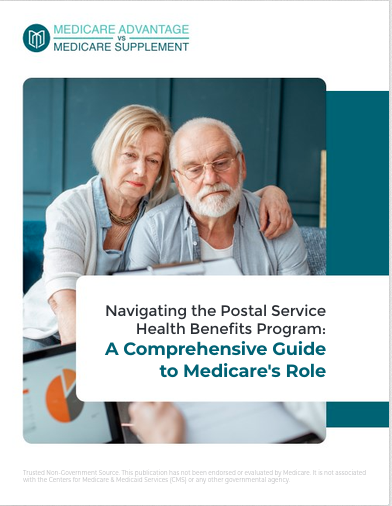Key Takeaways:
- Individuals with Federal Employee Health Benefits (FEHB) may not need Medicare Part D, but should consider their overall health care needs and costs before making a decision.
- Medicare Part D offers prescription drug coverage, which may complement or duplicate FEHB, making it essential to evaluate your current coverage.
You’ve Got FEHB – Do You Still Need Medicare Part D? Let’s Break It Down
Federal employees and retirees who are eligible for both Medicare and the Federal Employee Health Benefits (FEHB) Program might wonder if they also need to enroll in Medicare Part D, which covers prescription drugs. If you’re one of the millions benefiting from FEHB, you may be asking yourself, “Is Medicare Part D really necessary?” Let’s explore how these two plans interact and help you make an informed decision.
Understanding FEHB and Its Coverage
The Federal Employee Health Benefits (FEHB) program is a comprehensive health insurance plan offered to federal employees, retirees, and their families. One of its key strengths is that it typically includes coverage for prescription drugs, hospital care, and doctor visits. In most cases, FEHB provides robust health care coverage, which means many enrollees feel their needs are fully met without additional plans. However, as you approach eligibility for Medicare, it’s crucial to assess how Medicare Part D, specifically, fits into the picture.
What is Medicare Part D?
Medicare Part D is the section of Medicare that specifically covers prescription drugs. Part D is available to anyone who is eligible for Medicare Part A or enrolled in Part B, and it is offered through private insurance companies approved by Medicare. While FEHB covers many medical needs, Medicare Part D exists to help individuals access prescription medications at more affordable rates.
The main question you should ask yourself is: “Does my FEHB plan cover all my prescription drug needs, or would Medicare Part D provide additional benefits?”
Does FEHB Provide Sufficient Prescription Drug Coverage?
One of the benefits of FEHB is that most plans already include prescription drug coverage. In fact, for many federal employees and retirees, the prescription drug benefits under FEHB can be just as comprehensive as, if not better than, what Medicare Part D offers. This can lead to the assumption that there’s no need for Medicare Part D at all.
However, even though FEHB might offer substantial drug coverage, the details of each FEHB plan can vary. For instance, some plans might have higher co-pays for specific medications, or they may not cover a full range of prescription drugs that you need. Before making any decision, it’s wise to review your FEHB plan’s formulary (the list of covered medications) and compare it to what Medicare Part D might offer.
Coordination of Benefits: How FEHB and Medicare Part D Work Together
If you decide to enroll in Medicare Part D while you’re covered under FEHB, you’ll need to understand how these two plans interact. The process is called coordination of benefits. Essentially, coordination of benefits ensures that there’s no duplication of coverage while maximizing the value of both plans.
For prescription drugs, if you have both FEHB and Medicare Part D, one plan will serve as your primary coverage, and the other will serve as secondary. In most cases, FEHB would be your primary payer, and Medicare Part D would act as the secondary payer. This means your FEHB plan pays first, and if there are any remaining costs, Medicare Part D may cover some or all of the remaining balance.
But here’s the catch: Since FEHB often provides comprehensive prescription drug coverage, Medicare Part D might not add much additional value, leading many to forgo Part D enrollment altogether.
Avoiding Late Enrollment Penalties
One important aspect to consider is the Medicare Part D late enrollment penalty. If you don’t sign up for Medicare Part D when you’re first eligible, and you decide to enroll later, you may be subject to a penalty. This penalty increases the longer you wait to enroll in Part D and continues for as long as you have Medicare prescription drug coverage. Fortunately, as long as you have FEHB coverage, which is considered “creditable” prescription drug coverage, you won’t be penalized for delaying Medicare Part D enrollment.
To avoid any penalties, make sure your FEHB plan qualifies as creditable coverage, which means it’s expected to pay as much as or more than a standard Medicare Part D plan. Most FEHB plans meet this requirement, but it’s always a good idea to double-check with your plan provider.
When Might You Want Medicare Part D?
There are certain scenarios where enrolling in Medicare Part D could be beneficial, even if you have FEHB:
-
High Medication Costs: If you require expensive medications that are not fully covered by your FEHB plan, Medicare Part D may provide additional savings, particularly if your drugs are on the Medicare Part D formulary.
-
Special Circumstances: Sometimes, your health needs change, or you may encounter a situation where Medicare Part D offers a better deal for specific prescription drugs. In this case, adding Part D could reduce your out-of-pocket expenses.
-
Medicare Advantage Plans: If you’re considering joining a Medicare Advantage plan (Part C), which often includes Part D coverage, you may find that combining these benefits with your FEHB plan provides more extensive coverage.
The Impact on Your FEHB Premiums
It’s important to know that enrolling in Medicare Part D does not affect your FEHB premiums. Your premiums will remain the same whether or not you enroll in Medicare Part D. This is an important consideration for retirees who are trying to minimize their out-of-pocket costs.
Additionally, retirees should note that while FEHB continues to provide coverage after you turn 65, adding Medicare Part D can create overlapping coverage. Some individuals prefer to avoid this duplication, while others appreciate the added security of having multiple plans. It really depends on your specific health care needs.
Making the Right Decision: Factors to Consider
When deciding whether to enroll in Medicare Part D, there are several factors to consider:
- Current Prescription Drug Needs: Are your prescription drugs well-covered by FEHB, or are there gaps in your coverage?
- Future Needs: Even if your current FEHB plan covers your medications, consider how your health might change over time.
- Out-of-Pocket Costs: Will Medicare Part D reduce your costs for prescription drugs, or would it overlap with what FEHB already offers?
- Medicare Advantage Plans: Are you planning to enroll in a Medicare Advantage plan that includes drug coverage?
Each of these factors can influence your decision, so take the time to review your options and speak with a licensed insurance agent if necessary.
What You Should Do Next
Ultimately, the choice to enroll in Medicare Part D when you already have FEHB depends on your individual health needs and financial situation. For many federal employees and retirees, FEHB provides sufficient coverage, making Part D unnecessary. However, if you require specific drugs that aren’t fully covered by FEHB or want the extra security of having dual coverage, Medicare Part D might be a good addition.
As a next step, review your FEHB plan’s formulary, compare it with the Medicare Part D formulary, and assess your current and future prescription drug needs. If you’re uncertain, consulting with a licensed insurance agent can help clarify your options and ensure you avoid any unnecessary penalties down the line.
Evaluating Your Prescription Drug Needs
Making the right choice about Medicare Part D boils down to understanding your personal prescription drug needs. If your current FEHB plan covers everything you need, then you might not need Part D. But if you anticipate higher drug costs or changes in your health in the future, it might be worth considering.
Contact Information:
Email: [email protected]
Phone: 6195550123









